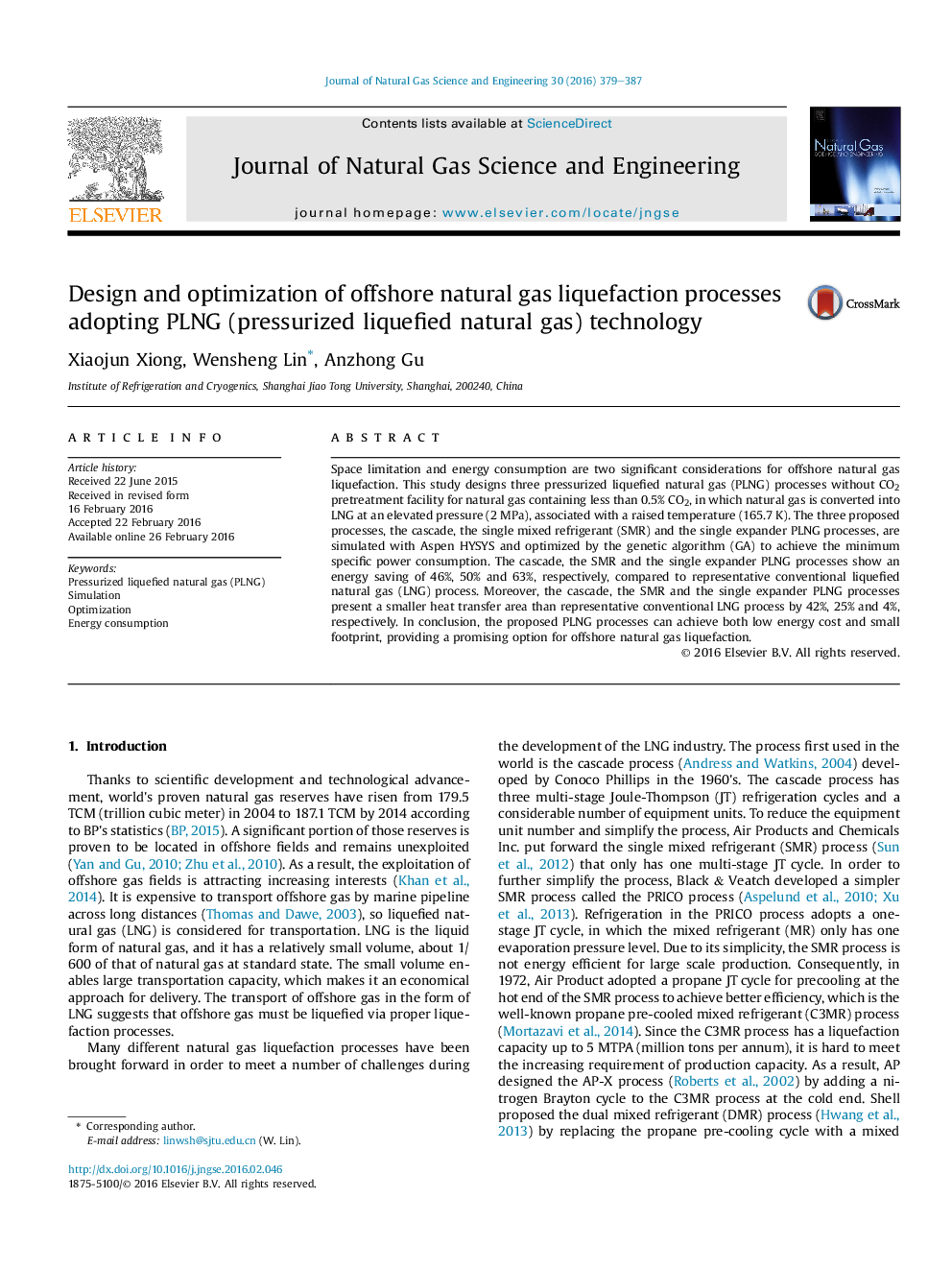| Article ID | Journal | Published Year | Pages | File Type |
|---|---|---|---|---|
| 1757182 | Journal of Natural Gas Science and Engineering | 2016 | 9 Pages |
•Three pressurized liquefaction processes for offshore natural gas are proposed.•The proposed processes are simulated and optimized by the genetic algorithm.•The cascade PLNG process saves energy by 46% and reduces heat transfer area by 42%.•The SMR PLNG process saves energy by 50% and reduces heat transfer area by 25%.•The expander PLNG process saves energy by 63% and reduces heat transfer area by 4%.
Space limitation and energy consumption are two significant considerations for offshore natural gas liquefaction. This study designs three pressurized liquefied natural gas (PLNG) processes without CO2 pretreatment facility for natural gas containing less than 0.5% CO2, in which natural gas is converted into LNG at an elevated pressure (2 MPa), associated with a raised temperature (165.7 K). The three proposed processes, the cascade, the single mixed refrigerant (SMR) and the single expander PLNG processes, are simulated with Aspen HYSYS and optimized by the genetic algorithm (GA) to achieve the minimum specific power consumption. The cascade, the SMR and the single expander PLNG processes show an energy saving of 46%, 50% and 63%, respectively, compared to representative conventional liquefied natural gas (LNG) process. Moreover, the cascade, the SMR and the single expander PLNG processes present a smaller heat transfer area than representative conventional LNG process by 42%, 25% and 4%, respectively. In conclusion, the proposed PLNG processes can achieve both low energy cost and small footprint, providing a promising option for offshore natural gas liquefaction.
